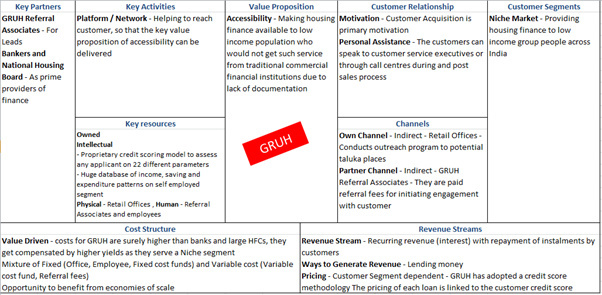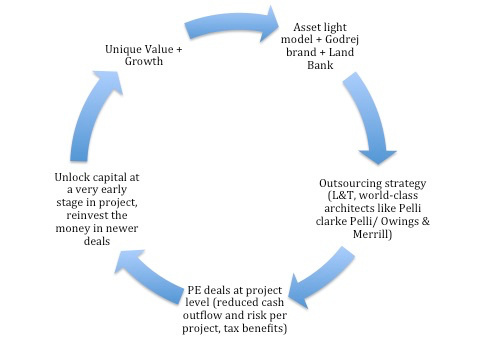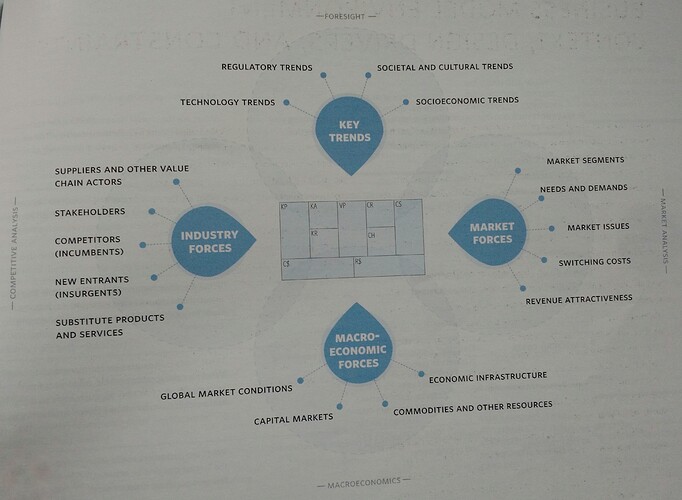Now we come to the crux of the matter - really - why bother with a complex Picture?
Why not keep things simple? Why make things complicated man, such a complex picture (though by now, I should have converted at least 10% of the folks who might have thought otherwise, ha ha 
 ). Why not just describe it in text - just show folks how to ask the right questions???
). Why not just describe it in text - just show folks how to ask the right questions???
There is a very simple answer. STRUCTURE.
Structure FORCES us to put ALL things on the Table.
The human mind (as Daniel Kahneman so brilliantly drilled into us, what we all knew probably) is extremely lazy in deliberate systemic thinking. The smarter the guy, the more prone he is to seducing (himself) and others with a coherent story built on important, but usually incomplete facts. Human Mind is always prone to taking the easier short-cuts - Is this really necessary? To understand the Business?? Who are you Kidding???
We find PICTURES like above extremely useful to shock us out of our complacence; This is deliberate System2 thinking making a very good start. I have seen extremely competent, extremely hard-working folks (and obviously also our smartest folks  ) take the easier way out all the time; they are rather content to write a free-flowing (what they call simple) 2 page report (or even a detailed 5-10 page free-flowing report, that don’t bind them to any structure). But wont help me sit with them and help them create this simple Product-Market picture for themselves. Even when I say it will take at most an hour - if you know this business decently well
) take the easier way out all the time; they are rather content to write a free-flowing (what they call simple) 2 page report (or even a detailed 5-10 page free-flowing report, that don’t bind them to any structure). But wont help me sit with them and help them create this simple Product-Market picture for themselves. Even when I say it will take at most an hour - if you know this business decently well 
Now that we have a simple deliberate way for System2 thinking, let me illustrate why we at VP increasingly feel very strongly about this, and are insisting this has to be a back-to-basics exercise for everyone. Try and get Prof Bakshi to attest that hey, everyone wake-up, and do this. If you are an aspiring investor, this is bread-and-butter you start with. Invaluable tool to get rid of error-prone System1 thinking (that all of us are generously blessed with!!, and that includes me, first).
1.KITEX GARMENTS
I couldn’t make it to the KItex AGM this year, due to completely unavoidable personal circumstances. I asked for a detailed write-up from the folks who attended.
Surprisingly, the moment I read the detailed notes, I was very very apprehensive. I just knew something is wrong - Kitex is losing domestic business, big time. Almost everyone disagreed, and I was absolutely sure - even without the immediate benefit of competition data. Pretty soon Ashwini Damani obliged with Jay Jay Data, and other data followed; everybody had to acknowledge - hey there is another grim side to the (erroneous) rosy picture being laid out.
What were the short-cuts?
Seduced by the glamour of the US Retail Story. That of a B2B business shepherd taking concrete steps towards becoming a B2C business, and hey don’t we know how good that can be??? While that is great, one completely overlooked updating on the basics - Competition data - capacities - and Sales???
But suppose you had a SIMPLE (that debate is settled right?  ) PICTURE like CCL’s above for KITEX (and you updated it before going to Kitex AGM) would you have come to much more grounded observations? Would you have got more much more out of the AGM interaction? Can there be any two opinions on that???
) PICTURE like CCL’s above for KITEX (and you updated it before going to Kitex AGM) would you have come to much more grounded observations? Would you have got more much more out of the AGM interaction? Can there be any two opinions on that???
2.AMBIKA COTTON
Again folks who have not created a simple picture like above for Ambika in their minds, seem prone to ignoring (because of Ambika’s obvious superlative strengths) tangible evidence on the Growth mindset issue??
Most folks draw the conclusion that once expansion comes in place, things will be hunky-dory again. These guys are ambitious, their production teams are all geared up; this story has to play out. But probably a crucial aspect gets ignored - again because NOT ALL FACTS ARE ON THE TABLE.
What would force all facts to be out on the Table? You got it, that SIMPLE PICTURE - which you need to update every year. Let this be a quiz question for those interested in the Business Canvas Model picture. No spoon-feeding, right?
I rest my case. I know there are enough skeptics out there who can’t be converted. But hey, if I have managed to create a few doubts in most folks minds, and could inspire one in 10 folks reading this thread (which is a herculean task by the way), I have done my job, Mr D 
 )
)
 )
)




